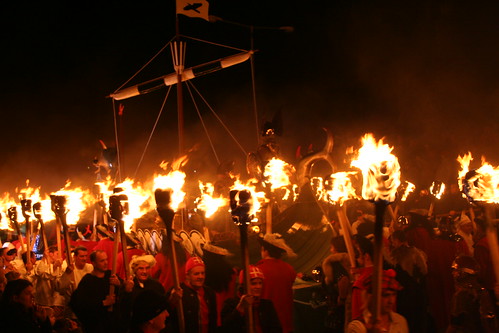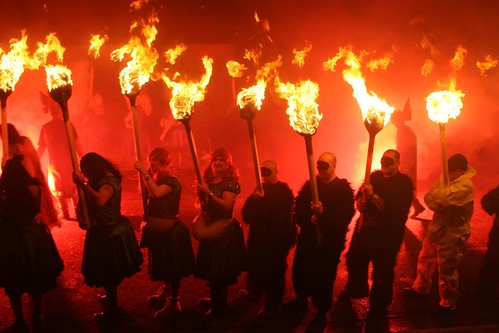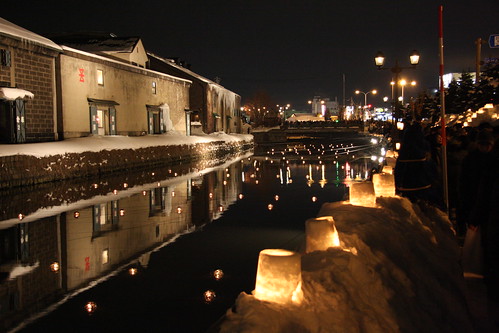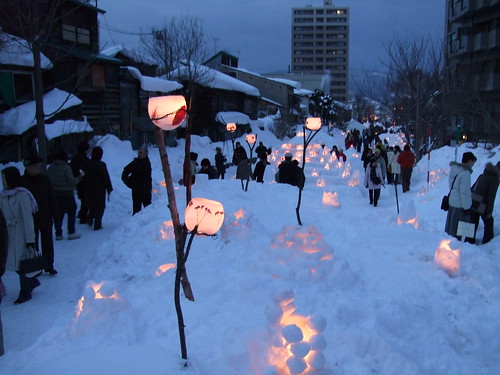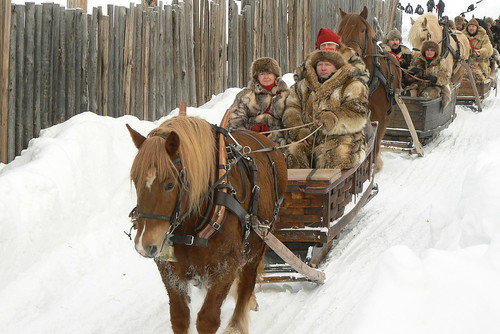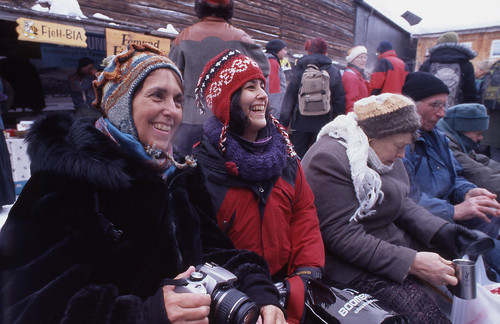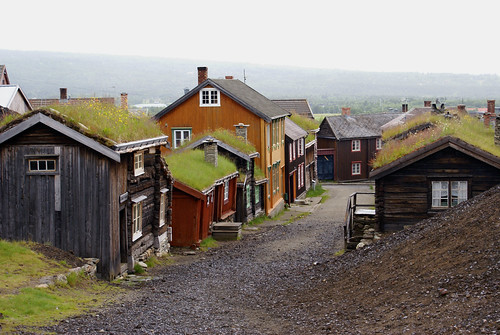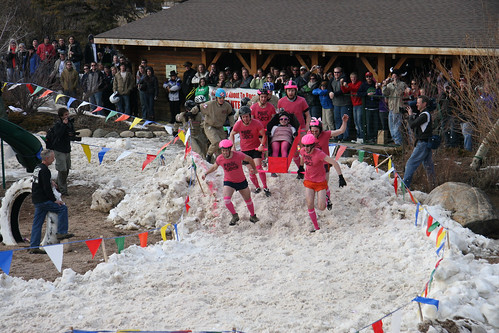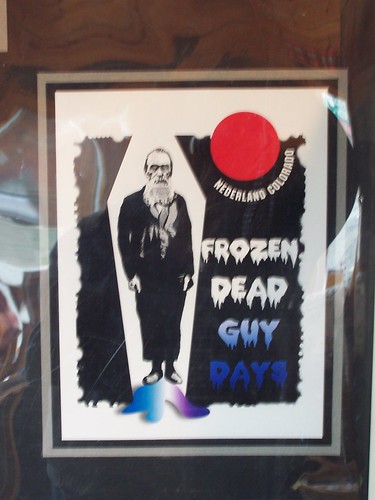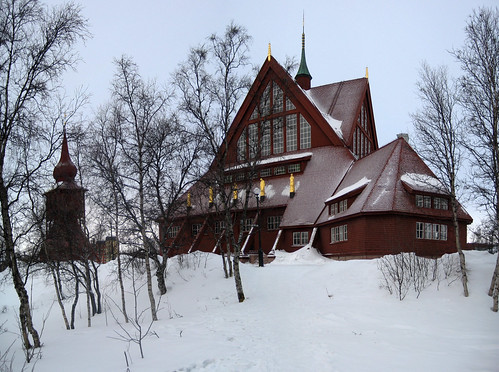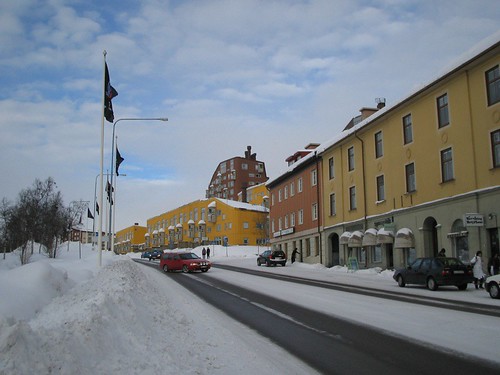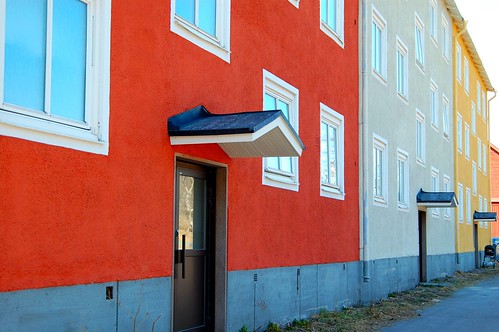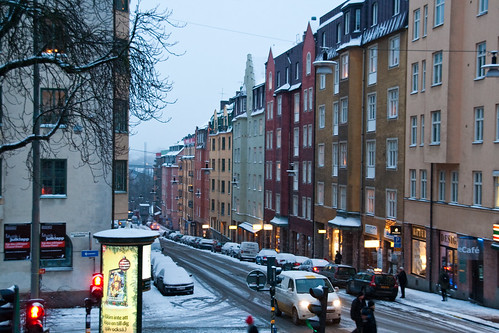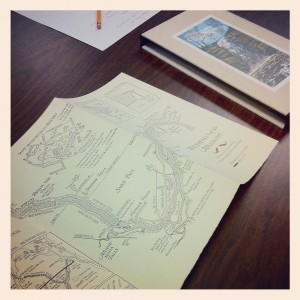Winter Festivals
Posted by Adrienne on November 29, 2012
During my quest to understand how cities can better embrace the winter season, I found that many cultures and communities survive those long winter months by gathering together and throwing themselves a party. Winter festivals in Northern Europe began with pagan-based rituals in the Middle Ages. While some still follow cultural traditions, many festivals today are commercial in nature. Some are large, attracting international crowds and generating a huge economic impact on the surrounding region; others are celebrated only by a small local community. Some festivals focus on the arts, while others have recreational competitions at their heart. Almost all festivals include some measure of music, food, drink, pageantry, beauty, and light. Each and every winter festival lends an air of community and festivity to an otherwise drab and lonely time of year.
Here are some of my favorites:
Up Helly Aa on Shetland Island, UK: Hundreds of people dressed as Vikings and carrying lighted torches form a procession through the darkened streets, singing Viking songs and following a Viking ship. After burning the ship in the harbor, they then spend the rest of the night singing, dancing, eating, and drinking. Everyone gets the next day off to recover.
Snow Light Path Festival(Yukiakarinomichi) in Otaru, Japan: This one looks particularly beautiful, celebrating the simple but breath-taking beauty of light and snow and ice. This historic city displays thousands of ice and snow lanterns on paths and streets – even floating in the canal – creating a “fantasy world after dark”.
Rørosmartnan: In the World Heritage mining town of Røros, Norway, residents celebrate folk cultural traditions on the streets in February with a marketplace, concerts and dances, cultural crafts, storytelling and bonfires in backyards, and horse-drawn sleigh rides. This one sounds particularly fun to me. It just looks so simple and homey and all about having fun outside with your neighbors in winter – and people seem to dress up in a lot of fur. Be sure to check out more photos on the official website. And side note: check out the village’s gorgeous building colors and green roofs in summer!
The last winter festival today is one of the weirder ones I came across…
Frozen Dead Guy Days: In the small mountain town of Nederland, Colorado, this crazy festival was inspired by the strange but true story of a Norwegian man (“Grandpa”) who, when he died in 1989, was cryogenically frozen and shipped to Nederland, where he is still “cared for” (packed in dry ice) in a nearby shed. The festival consists of a series of rather creative competitions including coffin racing, polar plunging, frozen salmon tossing, a frozen t-shirt contest, snowy beach volleyball, and a Rocky Mountain oyster-eating contest. Supposedly some festival-goers even make a special visit to the shed each year to have a drink with Grandpa, (may he RIP).
Corner Coffee
Posted by Adrienne on November 25, 2012
Since I get most of my writing done at coffee shops, I can’t resist writing a bit about them when I find a good one. Today I’m writing from a new (for me) coffee shop, Corner Coffee just north of downtown Minneapolis. It’s located in Minneapolis’ Warehouse District, a former industrial area listed on the National Register of Historic Places. The beautiful old brick warehouses, designed predominantly in the Chicago Commercial style, once functioned as wholesale and storage for milling and manufacturing in Minneapolis. It was closely tied to the nearby railroad network that connected Minneapolis to the rest of the country. Now these gorgeous 6-story structures house architecture firms, upscale condos, art studios, and nice restaurants. Corner Coffee is tucked into the first floor of one such building and offers a cozy and friendly atmosphere with lots of nooks in which to work, chat, or read. Today there’s live music, an informal hootenanny with half a dozen musicians doing a decent rendition of “Take a Load Off Annie”. I recommend it as an informal office-away-from-office, especially if you want to get away from the typical residential neighborhood coffee shops and see a beautiful example of adaptive reuse of a historic district.
Winter Cities Part I
Posted by Adrienne on November 7, 2012
I’m immersing myself in winter right now. Research for the second phase of the park project (mentioned in the last post) is exploring how the neighborhood can embrace winter in the park, activating it year-round to keep out crime. I’ve been looking at how other cities in winter climates embrace – or at least cope with – the season of cold and dark and snow. Do they design buildings/streets/open space differently? How do they plan their public transit or bike infrastructure? What cultural practices are a response to winter’s negative aspects? How do they celebrate the positive aspects?
While reading about various towns in northern climates (and keeping Google maps handy to look up where they are) I came across some beautiful images of Kiruna, the northern-most city in Sweden. Kiruna is the epitome of a winter city. North of the Arctic Circle, the average daily high in January is 12 °F. To give you an idea of how cold that is, the average daily high in January in the Twin Cities is 21.9 °F.
Brr.
Kiruna certainly knows how to design for winter. Their church, or kyrka, has long sloping roofs that are not only lovely, but also handle large amounts of snow quite easily.
Months and months of snow and ice mean a landscape of white and grey. While lovely in itself, color becomes an important factor. The warm colors used on the buildings in the city center of Kiruna become even more vibrant in winter.
Even Stockholm, at the southern end of Sweden, whose winters are not nearly as ruthless, emphasizes color in the city.
The texture and form of a simple stone wall can provide subtle beauty to the landscape, especially in winter.
More findings to come….
A New Focus
Posted by Adrienne on November 3, 2012
I began this blog way back in 2007 with a three-fold intention: 1. get to know the Twin Cities better by visiting, and writing about, independent coffee shops in the metro area, 2. practice my writing, and 3. get into graduate school. It worked well for those purposes and I received encouraging feedback about the blog from many readers (thank you!). Obviously it’s been awhile since I’ve written here, again for three reasons: 1. I got into graduate school, 2. I was very busy while in graduate school, 3. I’ve since graduated and my interests in writing have changed. Coffee shops no longer hold my curiosity as a subject matter, but they are certainly great places to get some work and writing done (for example: I’m sitting in Peace Coffee on Minnehaha Avenue – love this place! Also wish they had more evening hours….).
Since graduating with a Masters in Landscape Architecture in 2010, I’ve been working as a research fellow at the Metropolitan Design Center in the University of Minnesota’s College of Design. We function as a small think tank/consulting non-profit, assisting communities and cities in the metro area with research, planning, and conceptual design on urban design projects. We’ve worked on streetscapes, parks, housing, greenway plans, and many other issues. I get to do research, create graphics, design a bit, and help with community workshops. I love what I do and I’d like to keep doing it.
My favorite part, aside from knowing that we are helping communities make good urban design decisions, is the research. I love immersing myself in interesting topics, figuring out how to communicate my findings to other people, and seeing how what I’ve learned can make a difference in real ways. For example, in 2011, we worked with a Minneapolis neighborhood to reduce crime in a nearby park. I got to research how crime evolves in parks and how neighborhoods can fight back. In a nutshell, we discovered that busy parks are safe parks and that neighborhoods need to “take back” their parks by making their presence known and using the space. Since learning this, the neighborhood has started a non-profit dedicated to the park and has programmed weekly events in the park. MPR did a story about the changes the neighborhood has made. I’ve heard that since then, crime has greatly diminished in the park.
This experience convinced me that research does not have to be a frivolous pursuit by a nerdy person sequestered in an academic vacuum that never sees the light of day beyond a library. It can have real and lasting impact on real world problems. And that is what interests me. That is what I’d like to continue doing.
While doing research, I come across many amazing resources, fascinating tidbits of history, and interesting facts or ideas. This collection of articles, photographs, graphics, and ideas about cities, culture, history, and the environment are just gathering digital dust in my computer. So I’d like to share some of what I’m learning here on Cafeapolis, because others might find it equally as interesting – or maybe even life-changing, who knows. In many ways the blog is for me: to help me practice my writing and to have a display case for what I find. If it is successful and evolves into something really worthwhile, I may transport it to a “real” blog with its own name and intent. But in the meantime Cafeapolis will now function as my virtual workspace and fun informal project. You are welcome to follow along with me!
© Copyright 2006 Adrienne Bockheim.
